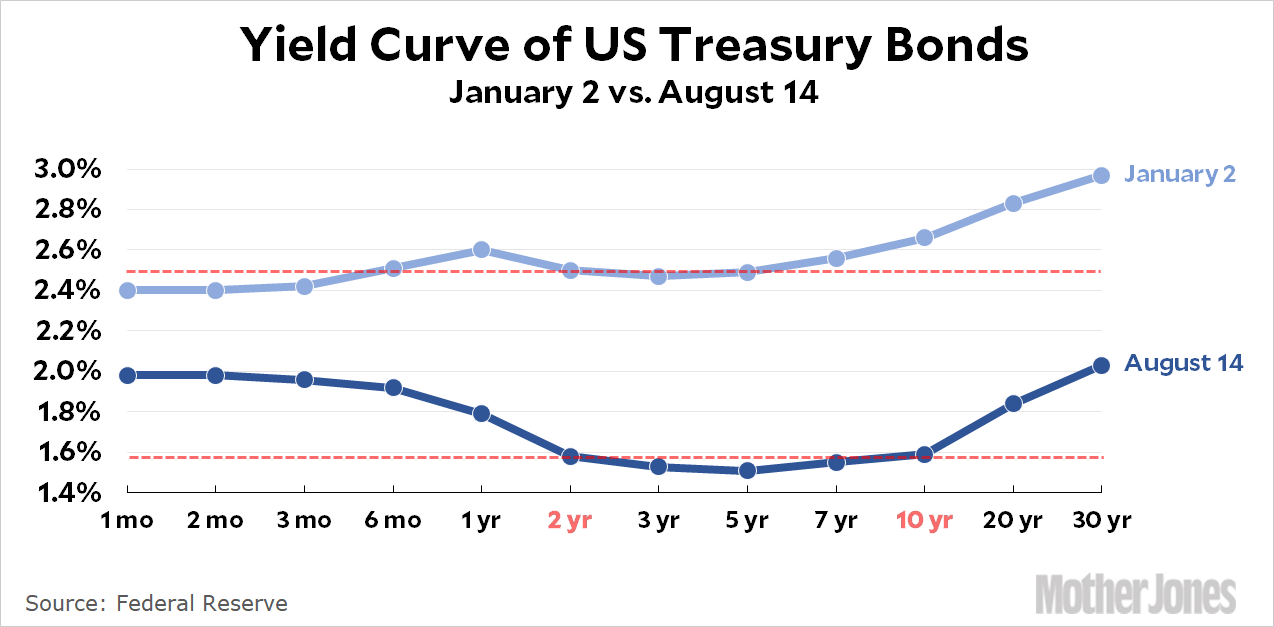Yesterday the yield curve inverted: the interest rates on 10-year treasury bonds were briefly lower than the interest rates on 2-year bonds. But that’s not a curve. It’s just two points. So why is it called a yield curve? Here’s why:

If you plot the interest rates for all the different US treasury bonds, you get a curve. The chart above shows the yield curve for the start of the year vs. yesterday.
The first thing you notice is that interest rates are lower across the board than they were in January. This is largely because investors expect inflation to decline in the future. The second thing you notice is that at the start of the year interest rates for long-term bonds were generally higher than short-term bonds. That’s normal, but today it’s no longer the case. These things bounce around a bit, but the 5-year rate dropped permanently below the 1-year rate in late January, for example. That is, it “inverted.”
Now, for reasons I don’t entirely understand, the key metric in all this is the 10-year rate vs. the 2-year rate. I’m not sure why those two are more important than all the others, but there you have it. They are. So even though a big chunk of the yield curve has been inverted for months, it was a big deal yesterday when the 10-year rate briefly dropped below the 2-year rate. (It rose slightly at the end of the day and is now a hair higher than the 2-year rate.)
Roughly speaking, treasury rates tell you what investors think interest rates will be in the future. When the yield on long-term rates is lower than the yield on short term rates it means they think interest rates will be relatively lower in the future than they are now. But why would they be lower? All sorts of reasons: lower inflation, rate cuts from the Fed, reduced demand, etc. All of these have one thing in common: they are associated with a weak economy. So when the yield curve inverts, it means a lot of investors are putting their money on the line to bet that the economy will be weaker in the future than it is now.
Are they right? Maybe! Or maybe not. However, yield-curve inversion has a track record of predicting recessions pretty well, which is why people pay attention to it. The good news, such as it is, is that there can be a long time between yield curve inversion and the start of a slump. For example, the last yield curve inversion began in February 2006. The Great Recession started in December 2007. That’s 22 months. So even if the yield curve inversion is truly telling us something this time around, it might still be a while before we see the economy go south.













